Aerial yoga, also known as anti-gravity yoga, has gained popularity in recent years for its unique approach to traditional yoga poses. Combining elements of yoga, Pilates, and aerial acrobatics, this form of exercise involves performing various poses and movements while suspended from a silk hammock.
"Fly High with Aerial Yoga! Elevate your practice and experience yoga like never before. From serene hammock poses to exhilarating inversions, discover the joy of aerial yoga today!" Aerial Yoga Poses
What is Aerial Yoga?
Aerial yoga utilizes a fabric hammock, often made of parachute silk or nylon, suspended from the ceiling. Practitioners use the hammock to support and deepen traditional yoga poses, allowing for greater flexibility and range of motion. This form of yoga offers a full-body workout that challenges strength, balance, and coordination.
Brief History of Aerial Yoga
Aerial yoga was developed by aerial performer Christopher Harrison in the early 2000s as a way to combine his love for yoga and aerial arts. Since then, it has evolved into a popular fitness trend, with classes offered in studios worldwide. Its roots in circus arts and yoga philosophy have made it a unique and engaging practice for fitness enthusiasts of all levels.
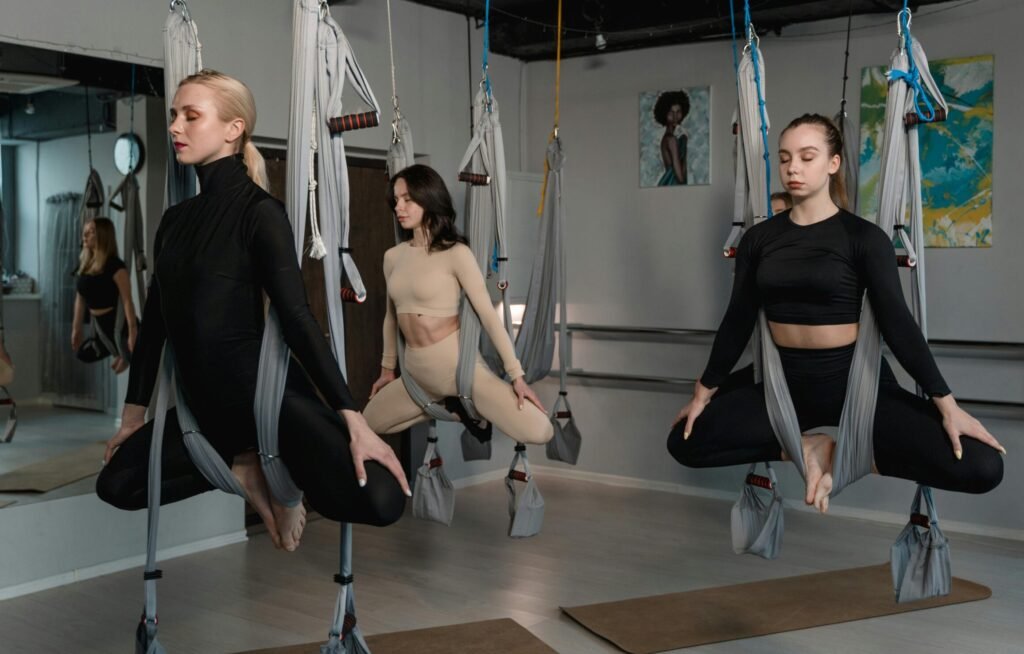
Benefits of Aerial Yoga Poses
Aerial yoga isn’t just about striking Instagram-worthy poses; it offers a plethora of physical, mental, and emotional benefits that can enhance your overall well-being. Let’s delve deeper into why aerial yoga has captured the hearts and minds of practitioners worldwide:
Improved Flexibility: The unique suspended nature of aerial yoga allows for deeper stretches and increased flexibility compared to traditional yoga. By leveraging the support of the hammock, practitioners can safely explore deeper stretches, targeting muscles and joints that may be difficult to reach on the mat alone.
Enhanced Strength: Aerial yoga challenges the entire body, requiring strength not only in the muscles but also in stabilizing and supporting the body in various poses. From core strength to upper body and lower body muscles, aerial yoga provides a full-body workout that can lead to increased strength and muscle tone over time.
Spinal Decompression: Inversions, such as hanging upside down in the hammock, offer a unique opportunity for spinal decompression. By reversing the effects of gravity, aerial yoga can alleviate pressure on the spine, promoting spinal health and reducing discomfort associated with compression.
Stress Relief: Like traditional yoga, aerial yoga incorporates mindfulness, deep breathing, and meditation techniques that can help reduce stress and promote relaxation. The gentle swaying motion of the hammock combined with deep stretches creates a calming effect on the nervous system, allowing practitioners to release tension and unwind.
Improved Balance and Coordination: Balancing in the hammock requires focus, stability, and coordination, making aerial yoga an excellent practice for improving balance and proprioception. Over time, practitioners develop a greater sense of body awareness and control, both on and off the mat.
Increased Circulation: Inverted poses in aerial yoga facilitate blood flow to the brain and upper body, promoting circulation and oxygenation of tissues. Improved circulation can enhance energy levels, cognitive function, and overall vitality.
Boosted Mood and Creativity: Aerial yoga encourages playful exploration and self-expression, fostering a sense of freedom and creativity in movement. The release of endorphins during exercise can also uplift mood and promote feelings of happiness and well-being.
Community Connection: Many practitioners find a sense of camaraderie and community in aerial yoga classes, bonding over shared experiences and challenges. The supportive environment of a class setting can enhance motivation, accountability, and social connection, contributing to overall mental and emotional wellness.
In summary, aerial yoga offers a holistic approach to health and fitness, combining physical strength and flexibility with mental clarity and emotional balance. Whether you’re looking to deepen your yoga practice, alleviate stress, or simply try something new, aerial yoga has something to offer practitioners of all ages and abilities.
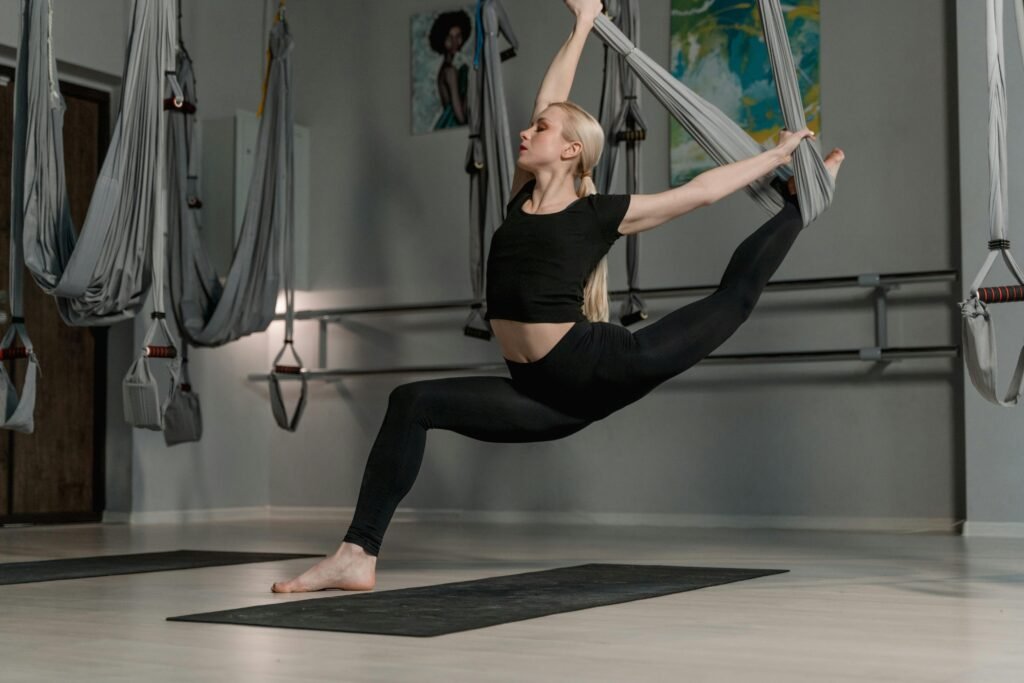
Basic Aerial Yoga Poses
Hammock Pose
The Hammock Pose, also known as the Cocoon Pose, involves sitting inside the hammock with the fabric wrapped around the body, resembling a cocoon. This pose gently stretches the spine and shoulders while promoting relaxation and deep breathing.
How to Perform:
- Sit comfortably on the edge of the hammock with your feet resting on the floor.
- Slowly lower yourself back into the hammock, allowing the fabric to support your body.
- Wrap the fabric snugly around you, creating a cocoon-like enclosure.
- Relax your arms and legs, allowing your body to sink deeper into the hammock.
- Close your eyes, focus on your breath, and enjoy the sensation of being supported and cradled by the hammock.
Airborne Pigeon Pose
The Airborne Pigeon Pose involves using the hammock to support one leg while extending the other leg behind you, similar to the traditional Pigeon Pose on the mat. This pose helps improve hip flexibility and balance while strengthening the core and lower body muscles.
How to Perform:
- Begin by standing facing the hammock with one foot slightly in front of the other.
- Lift one leg and place it inside the hammock, allowing the fabric to support your ankle and calf.
- Extend the opposite leg behind you, resting the top of your foot on the ground.
- Engage your core muscles to maintain balance and stability.
- Gently lean forward, keeping your spine long and chest lifted, until you feel a comfortable stretch in the hip of the extended leg.
- Hold the pose for several breaths, then switch sides and repeat on the other leg.
Floating Forward Fold Pose
The Floating Forward Fold Pose is a variation of the traditional Forward Fold, performed while suspended in the hammock. This pose stretches the hamstrings and lower back while promoting a sense of surrender and release.
How to Perform:
- Start by sitting inside the hammock with your legs extended in front of you.
- Hold onto the sides of the hammock with your hands for support.
- Engage your core muscles and slowly begin to lean forward, allowing your torso to fold over your legs.
- Keep your spine long and your chest open as you deepen the stretch.
- Allow your body to relax and surrender to the support of the hammock, feeling a gentle traction in the spine.
- Hold the pose for several breaths, then slowly release and come back to a seated position.
These instructions provide a basic overview of each pose and how to perform it safely and effectively using an aerial yoga hammock. Practice mindfulness, listen to your body, and enjoy the unique experience of aerial yoga!
Intermediate Aerial Yoga Poses
Inverted Warrior Pose
In the Inverted Warrior Pose, practitioners flip upside down in the hammock with one leg extended behind and the other bent in front. This pose challenges balance and stability while opening the chest and shoulders.
How to Perform:
- Start by standing facing the hammock with one foot slightly in front of the other.
- Reach overhead and grab the fabric of the hammock with both hands.
- Lean forward slightly and lift one leg, placing the foot inside the hammock.
- Swing the other leg back behind you and plant the foot on the ground.
- Engage your core muscles and slowly begin to lean back, allowing your body to invert.
- Extend the arms overhead and open the chest, reaching back with the bent leg.
- Keep your gaze steady and breathe deeply as you hold the pose for several breaths.
- To come out of the pose, slowly return to an upright position and switch sides, repeating the sequence on the other leg.
Star Inversion Pose
The Star Inversion Pose involves spreading the arms and legs wide while suspended upside down in the hammock. This pose requires strength and flexibility in the shoulders and core muscles, offering a full-body stretch and strengthening workout.
How to Perform:
- Begin by flipping upside down in the hammock, with both legs extended upward.
- Spread your arms and legs wide, creating a star shape with your body.
- Engage your core muscles to stabilize your body and maintain balance.
- Keep your arms and legs active, reaching outward in opposite directions.
- Relax your neck and shoulders, allowing your body to fully surrender to the support of the hammock.
- Hold the pose for several breaths, feeling the stretch in your entire body.
- To come out of the pose, slowly draw your limbs back together and return to an upright position.
Hanging Backbend Pose
The Hanging Backbend Pose is performed by hanging upside down in the hammock with the arms extended overhead. This pose stretches the spine and chest while opening the heart center and releasing tension in the shoulders and neck.
How to Perform:
- Start by flipping upside down in the hammock, with your legs extended upward and your hands holding onto the fabric above your head.
- Allow your head and torso to hang back, creating a gentle backbend.
- Keep your arms active and engaged, reaching overhead and slightly back.
- Relax your neck and shoulders, allowing the weight of your body to create a gentle traction in the spine.
- Breathe deeply and hold the pose for several breaths, feeling a stretch across the front of your body.
- To come out of the pose, slowly bring your torso upright and release the fabric, allowing your body to return to a neutral position.
Practice these intermediate aerial yoga poses with patience and mindfulness, honoring your body’s limits and enjoying the unique sensation of being suspended in the hammock.
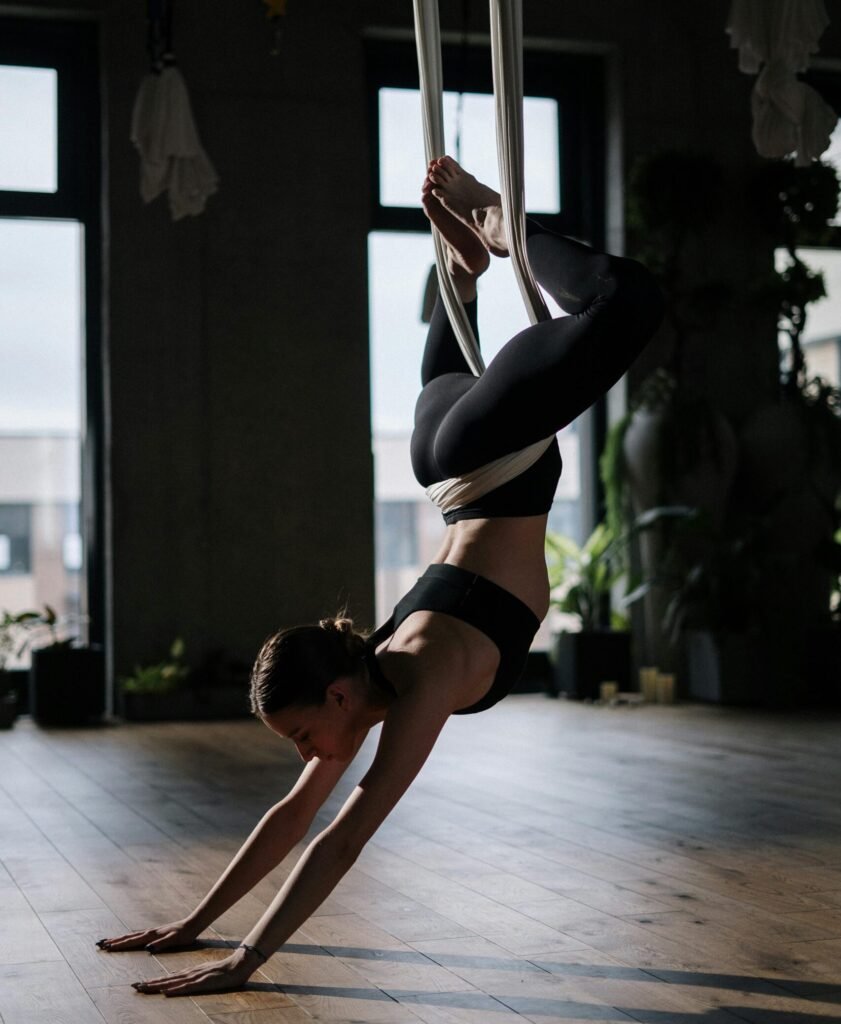
Advanced Aerial Yoga Poses
Flying Splits Pose
The Flying Splits Pose involves extending one leg forward and the other leg back while suspended in the hammock. This advanced pose requires flexibility and strength in the legs and core muscles, as well as balance and control.
How to Perform:
- Begin by flipping upside down in the hammock, with both legs extended upward.
- Bend one knee and hook the foot into the fabric, securing it behind the knee.
- Extend the opposite leg forward, keeping it parallel to the ground.
- Engage your core muscles and actively press through the extended leg, reaching through the toes.
- Keep your hips squared and your torso lifted, avoiding any rotation in the pelvis.
- Hold the pose for several breaths, feeling the stretch in the hamstrings and hip flexors.
- To come out of the pose, slowly draw both legs together and return to an upright position, then switch sides and repeat the sequence on the other leg.
Bird of Paradise Pose
The Bird of Paradise Pose is a challenging balance pose that begins with one leg extended in front and the other leg wrapped around the hammock. Practitioners use the support of the hammock to deepen the stretch and maintain balance while opening the hips and chest.
How to Perform:
- Start by standing facing the hammock with one foot slightly in front of the other.
- Lift one leg and place the foot inside the hammock, allowing the fabric to support your ankle and calf.
- Bend the opposite knee and wrap the foot around the outside of the hammock, securing it behind the knee.
- Engage your core muscles and slowly begin to lift the wrapped leg, extending it outward and upward.
- Keep your standing leg strong and stable, pressing firmly into the ground for support.
- Extend your arms overhead and open your chest, reaching upward with your fingertips.
- Hold the pose for several breaths, finding balance and stability in the pose.
- To come out of the pose, slowly release the wrapped leg and return to an upright position, then switch sides and repeat the sequence on the other leg.
Aerial Handstand Pose
The Aerial Handstand Pose is the pinnacle of aerial yoga poses, requiring advanced strength, balance, and control. Practitioners use the hammock to support the legs while balancing upside down with the hands on the ground, offering a unique perspective and challenge to traditional handstand practice.
How to Perform:
- Begin by flipping upside down in the hammock, with both legs extended upward and your hands on the ground.
- Walk your hands back toward the hammock, bringing your shoulders directly over your wrists.
- Engage your core muscles and slowly begin to lift one leg, allowing the other leg to follow.
- Press firmly through your hands and fingertips, lifting your hips upward toward the sky.
- Keep your legs straight and active, reaching through the toes toward the ceiling.
- Find balance and stability in the pose, using the support of the hammock to control your movements.
- Hold the pose for several breaths, enjoying the sensation of being upside down.
- To come out of the pose, slowly lower one leg at a time back to the ground, then return to an upright position.
These advanced aerial yoga poses require strength, flexibility, and concentration, so take your time and practice with patience and persistence. Listen to your body and only attempt poses that feel safe and comfortable for you.
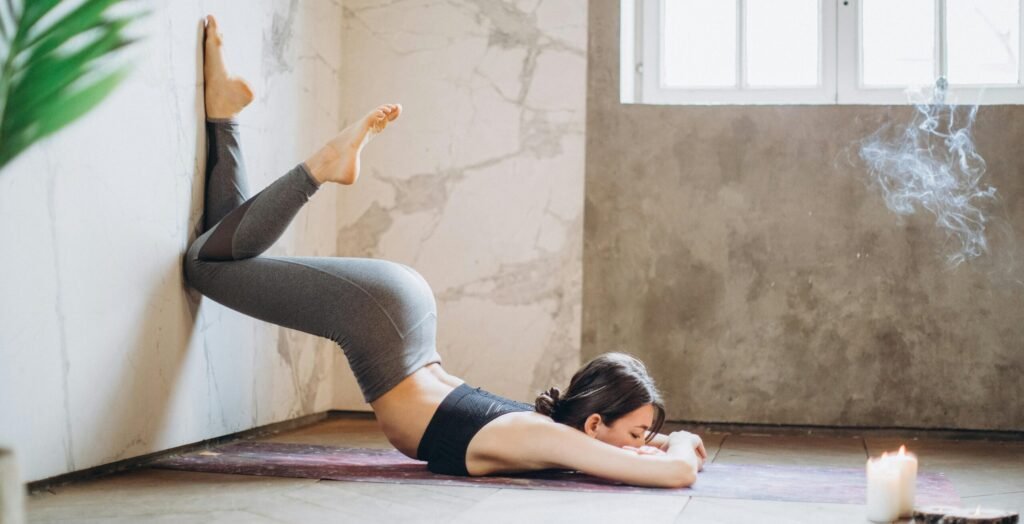
READ ABOUT “Top 5 Most Difficult Yoga Poses: Challenging Poses” CLICK
Safety Tips for Aerial Yoga Poses
Choose a Certified Instructor
When practicing aerial yoga poses, it’s essential to work with a certified instructor who has experience teaching this specialized form of yoga. Proper instruction and guidance ensure a safe and effective practice, reducing the risk of injury.
Proper Warm-up and Cool Down
As with any physical activity, warming up and cooling down are crucial aspects of aerial yoga poses. Gentle stretching and mobility exercises prepare the body for movement, while relaxation techniques promote recovery and reduce muscle soreness.
Listen to Your Body
Above all, listen to your body during aerial yoga poses. Pay attention to any discomfort or pain and modify poses as needed to accommodate your individual needs and limitations. By practicing mindfulness and self-awareness, you can enjoy the benefits of aerial yoga safely and effectively.
Conclusion
In conclusion, aerial yoga poses offers a unique and transformative approach to traditional yoga practice. From basic poses to advanced inversions, this form of exercise challenges the body and mind while promoting strength, flexibility, and mindfulness. Whether you’re a seasoned yogi or new to the practice, aerial yoga provides an opportunity to elevate your practice and experience the joy of movement in a whole new way.
FAQ
Most frequent questions and answers
Absolutely! Many studios offer beginner-friendly aerial yoga classes with modifications and support to help newcomers feel comfortable and confident.
Yes, aerial yoga is excellent for improving flexibility. The support of the hammock allows for deeper stretches and greater range of motion.
While aerial yoga is generally safe for most people, it’s essential to consult with a healthcare provider if you have any pre-existing medical conditions or concerns. Some studios may have age restrictions or require parental consent for minors.
Wear comfortable, form-fitting clothing that allows for freedom of movement. Avoid loose or baggy clothing that may get caught in the hammock.
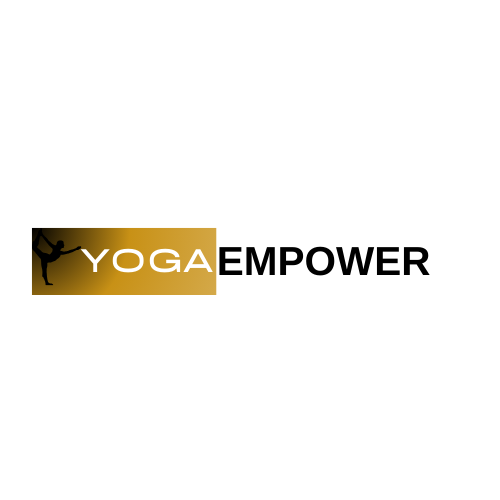
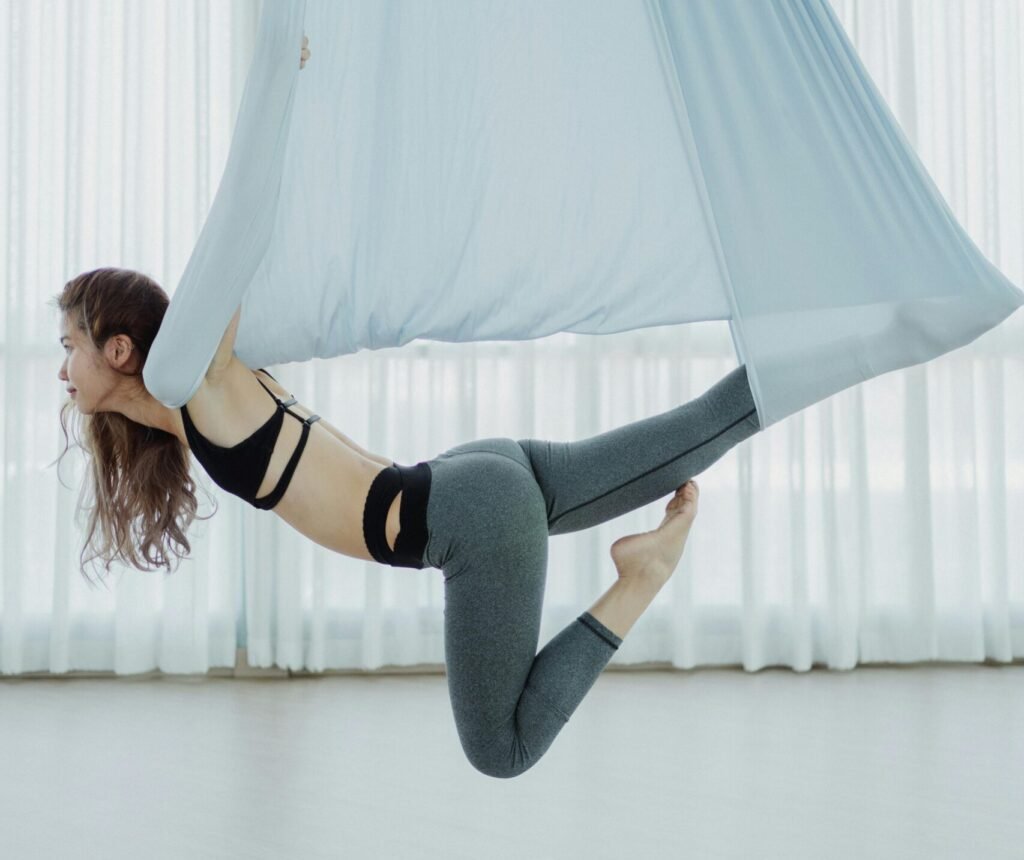
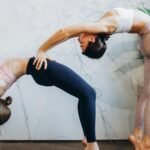

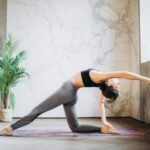



[…] READ ABOUT “Aerial Yoga Poses: Elevate Your Practice” CLICK […]